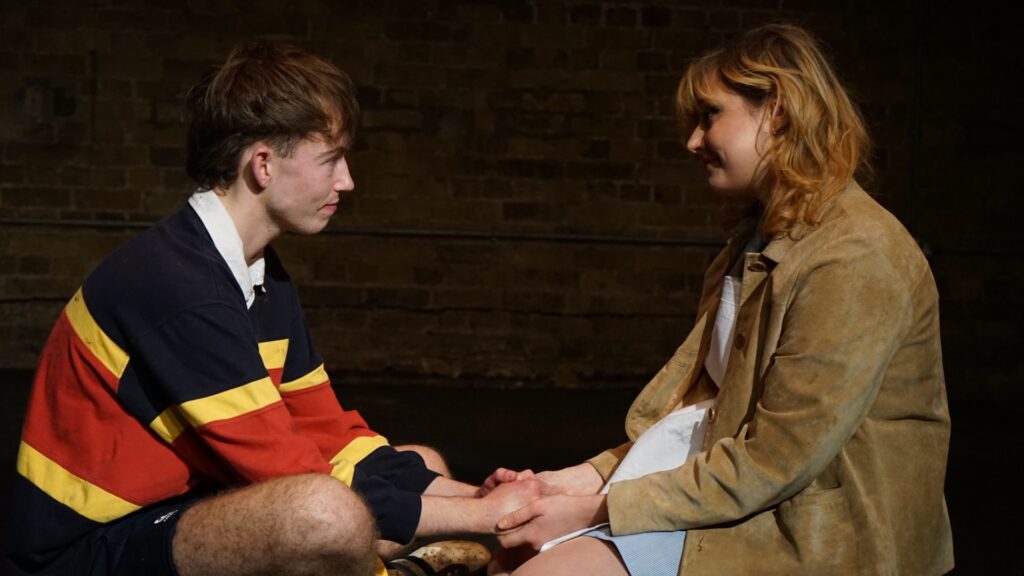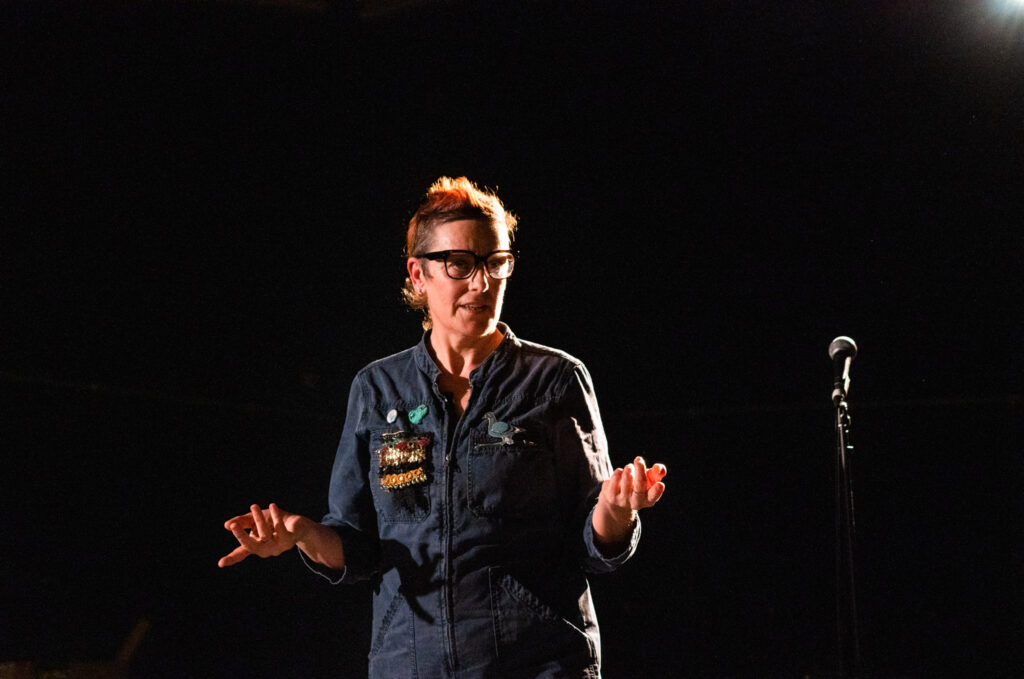Dylan Moore meets classical singer and facilitator Richard Parry, and catches a glimpse of a society that could yet be
‘Richard Parry has founded an institute of Welsh affairs, says Dylan, halfway through our conversation.’ Parry allows himself a smile at the length of time it has taken for your correspondent to reach this realisation. The mission of the IWA is to ‘act as a catalyst for change, [to] bring people together so that ideas can collide and solutions can be forged, its vision ‘to help create a Wales where everyone can flourish’. Samuel Taylor Coleridge was a visionary, and so is Richard Parry. Coleridge in Wales, ostensibly a ‘nation-wide touring festival’ to take place over three months early this summer, is perhaps, above all else, an independent think tank: its aim ‘to gently seek and nourish courageous new thinking, relationships and action for our times.’
In 1794, four years before his celebrated collaboration with Wordsworth, Lyrical Ballads, reinvented poetry, Samuel Taylor Coleridge dropped out of Cambridge University and took off on a walking tour of Wales. Immersed in the raw beauty of a natural world that was, then, of little interest to society, Coleridge dreamed up a utopian vision he called ‘pantisocracy’ – ‘level government by and for all’ – and made plans to institute an egalitarian community on the banks of the Susquehanna river in the eastern United States. When his friend, the poet Robert Southey, doubted the project’s viability, for a while the plan was to decamp to Wales.
Despite Coleridge’s affirmed place in the canon of English poetry – his reputation rests today on a handful of very great poems, ‘Christabel’, ‘Frost at Midnight’, ‘Kubla Khan’ and the peerless ‘Rime of the Ancient Mariner’ – Richard Parry suggests that the fullness of Coleridge’s genius ‘has never been fully celebrated.’ R.S. Thomas, in ‘Abercuawg’, his keynote address to the 1976 Eisteddfod about a relationship in Welsh culture of place and identity, claimed that ‘in order to understand imagination’s true meaning one must be acquainted with the work of Coleridge, but I haven’t time to go into that today.’ What Parry is planning, in association with an already impressive cast of collaborators, is ‘an eighty day footnote’ to Thomas’ remark, ’forty years later, to find out what that means.’
The 80 day festival will comprise meetings, happenings, local events, touring exhibitions, excursions and theatre, winding its way around Wales, through museums, universities, art centres and local communities. There are even plans to bring the Ancient Mariner himself, together with a crew full of zombies, into the ports and harbours of Wales. But this is no conventional ‘commemorative’ event, despite that this year will mark the bicentenary of Coleridge’s midlife classic Biographia Literaria. Parry is less interested in celebrating the man Coleridge or exploring the nation Wales than the inverse. The artist Ivor Davies has summarised the vision thus: ‘Most people would think of Wales as a place and Coleridge as person; and what it seems you are doing, rather, is to treat Wales as a person – and Coleridge as a place.’
It is an astute observation that reaches toward the heart of the ‘territory’, a word Parry employs time and again as he ambles through the philosophical underpinnings of the project. Personally, the territory explored by the project encompasses Parry’s singing heritage as a classical baritone and his work as a facilitator, which, he explains, is rooted in the work of the American psychologist Carl Rogers, whose groundbreaking work in establishing a person-centred approach in clinical psychology led to, amongst other things, the appearance of the modern counsellor.
But Parry is self-effacing, and it is the unexplored avenues and canons in the mind of Coleridge that fire this festival of the public imagination. One of the reasons Parry claims that ‘Coleridge’s ideas do not sit well with the English cultural palette’ is that he was ‘a major conduit for European sensibility and thinking.’ At a time when England, but perhaps not Wales, again seems to be pulling away from the continent, Coleridge in Wales asks the question: ‘What cultural, social and environmental treasure does Wales hold today that other areas of Britain have forgotten?’
Parry describes himself as ‘just an arm waver’. ‘These are not my ideas,’ he says, ‘I’m a facilitator and am just pointing out that a lot of unfashionable stuff sits in a particular constellation… a powerful, and important constellation.’ This ‘unfashionable stuff’ includes the ‘brooding poets and philosophers who cracked the French Enlightenment’ and clearly inform the project’s scope. The names that pepper Parry’s conversation form a kind of alternative history of ideas: the German philosopher-poets Johann Gottfried von Herder and Johann Wolfgang von Goethe, Schelling, the half-forgotten Englishmen who prefigured them, Cambridge Platonists Henry More and Ralph Cudworth, and Ruskin’s profound influence on Gandhi.
What links such disparate figures is an emphasis on the validity of experience and a freedom from limiting mechanical and materialist thinking. ‘The highly influential and now rather forgotten clergyman and political campaigner F.D. Maurice was very much inspired by Coleridge,’ says Parry, ‘and asserts boldly and learnedly that we are not animals with souls, but spiritual beings.’ In a dominant culture of materialism and an age of narrow policy agendas, it is heartening to hear such a clearly different voice being brought back into circulation. Whatever might actually happen next year – and Parry cheerfully admits he is not fully sure, because of the massive emphasis on ‘participation’ – it is clear that Coleridge does have something to say to us, now, about our lives, personal and collective.
‘This exploration is not a backward-looking re-visit of 18th and 19th century historic Romanticism,’ emphasises Parry, ‘It is a contemporary exploration, with institutions and communities, of unexplored intellectual streams and daily culture that emphasise the wealth of relationship and place in our communities and economies.’
‘Perhaps a stereotypical English-British culture is in terror of spirit; there seems an antipathy to it in modern Britain and in popular culture,’ Parry ventures. ‘And Coleridge is interested in spirit, theologically and philosophically held, that doesn’t seek to instrumentalise the Other. His language of spirit gives us a better repertoire for talking about our sense of self and a wider creative capacity.’
Coleridge was an anti-slaver whose opposition to the human capacity to enslave, to host and to relationally instrumentalise each other went beyond his activism against the economic slavery opposed by Wilberforce. Ironically, both men were addicted to opium, Coleridge famously so. ‘We don’t hear much about Wilberforce’s opium habit,’ says Parry wryly. ‘He was able to regulate it, whereas Coleridge was a much more turbulent personality.’ The poet once tried and failed to kick his addiction by going cold turkey on an epic walk from the Lake District into Scotland.
But this popular image of Coleridge the drugged-up madman poet has eclipsed not only Coleridge the polymath – journalist, scientist, diplomat, revolutionary, thinker – but also Coleridge as ‘a place’: a critical juncture in the history of European ideas, a road not taken that will, at last, be embarked upon, by Wales ‘a person’ next year.
Says Parry: ‘In the mid nineteenth century, John Stuart Mill declared that everyone was either a Benthamite or a Coleridgean. As Jeremy Bentham’s utilitarianism began to dominate politics and culture, we’ve sort of lost sight of the alternatives.’ But he also identifies and emphasises in Coleridge ‘the power of the fragment’. The poet’s breadth of vision and chaotic lifestyle left many projects tantalisingly unfinished, and to some extent Coleridge in Wales is about picking up some of the pieces. The artist and Parry’s co-curator Chris Glynn has called the project ‘a slow-motion Hadron Collider, around the mountains of Wales, seeking lost and hidden particles of relationship.’
It is to these ideas – of relationship, of participation, of humanity – that the conversation constantly returns. ‘The bedrock of a creative economy is strong communities and a capacity to be hosted by the environment and each other,’ maintains Coleridge, through Parry, and ‘English pragmatic materialism no longer provides the institutions for us to address questions of how we handle our capacity to be destructive, or to be a blessing.’
One Welshman who has grappled with such questions is the twentieth century painter and modernist poet David Jones, whose famous copperplate engravings illustrating The Rime of the Ancient Mariner are to receive a full retrospective at the National Gallery in Cardiff. Jones identified in the poem a Brythonic hud a lledrith mystery voyage that explores a central theme of our relationship to the natural world.
Parry is full of praise for Wales’ pioneering Future Generations Act, but convinced that UNESCO’s ‘three pillars’ of sustainability – the freedom to move capital, social inclusion (‘couldn’t they stomach social justice?’) and the environment – cannot be supported by a new fourth pillar, culture, because ‘culture is our humanity, it is who we are.’ ‘Art and creativity,’ he argues, with Coleridge leaning heavily over his shoulder, ‘are not a bolt-on. Our current culture has a tendency to leave artists marginalised and the theologically interested wandering. What Coleridge sought to do was to balance liberalism and radicalism with conservative institutions.’ Gladstone, claims Parry, ‘attempts to build the British state out of Coleridge – the relationship between church and state etcetera.’
And it is within these etceteras that the territory lies. An exploration as much of Wales in Coleridge as the other way around. A footnote to R.S. Thomas. An exploration of the Ancient Mariner illustrations of David Jones. A ‘sigh’ for a girl called Mary Evans in Wrexham. And a inspired scribbling on a poster by his sometime collaborator Iolo Morgannwg. Disillusioned and returning from London, the founder of the modern Eisteddfod – where Coleridge in Wales will culminate next year – stopped in Bristol where he heard Coleridge lecturing. His graffito read simply, ‘Coleridge, Coleridge, Coleridge, Coleridge, Coleridge.’
It is enough to make one want to add: ‘Yes, Coleridge.’






Comments are closed.